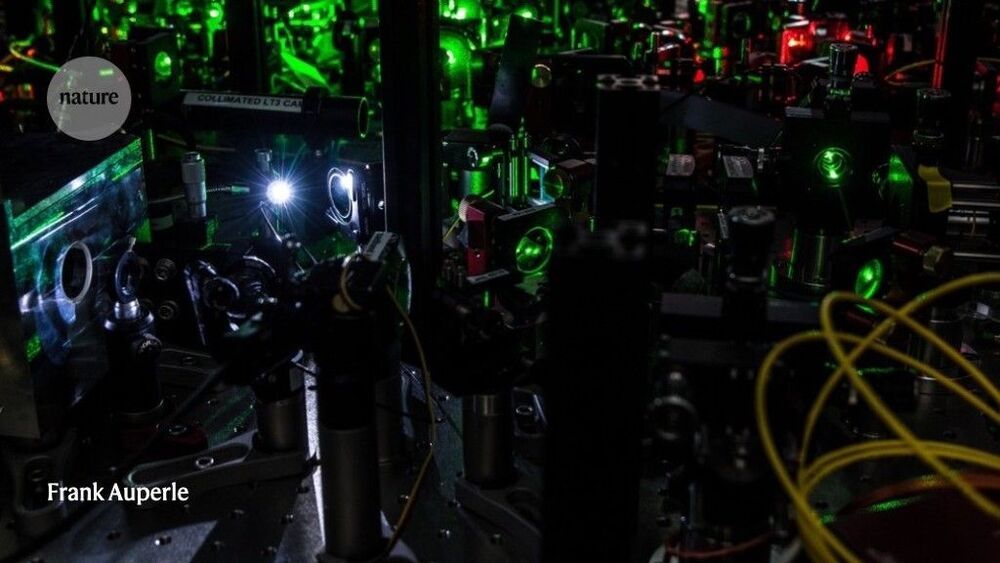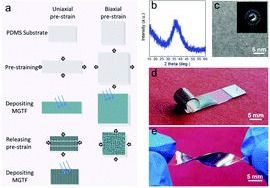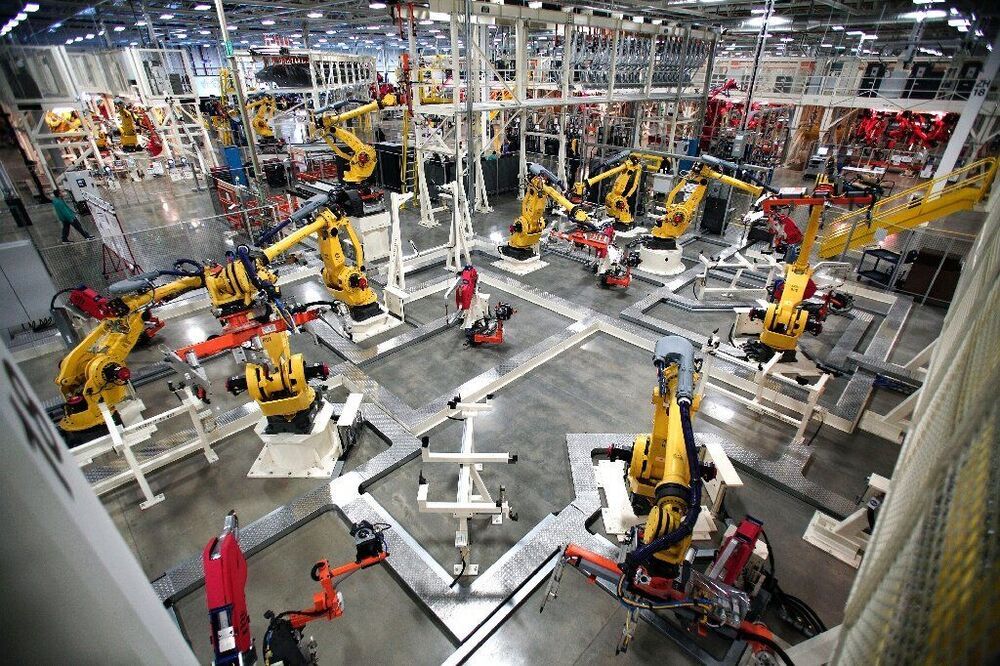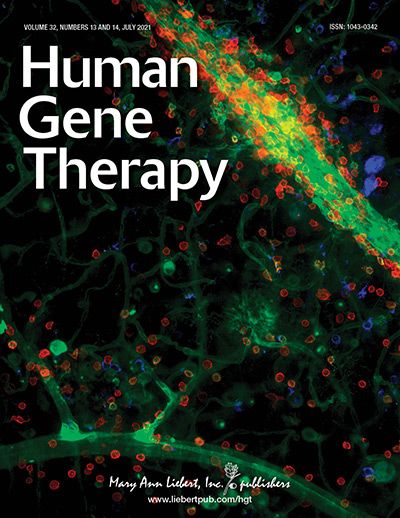Be it large enterprises or small medium-sized businesses, Quantum Computing and Artificial Intelligence (AI) are two of the biggest buzzwords in IT today.




Stretchable electrodes are essential components for wearable electronics. However, the stretchability of the electrodes is often achieved with the sacrifice of electronic conductivity along with huge variation in resistance. In this work, stretchable metallic glass electrodes (MG-electrodes) that have both h.

Google’s parent Alphabet unveiled a new “moonshot” project to develop software for robotics which could be used in a wide range of industries.
The new unit, dubbed Intrinsic, will “become an independent Alphabet company,” and seek industrial partners to advance their work helping to make everything from solar panels to cars, the new unit’s chief, Wendy Tan-White, said in a blog post.
“Intrinsic is working to unlock the creative and economic potential of industrial robotics for millions more businesses, entrepreneurs, and developers,” she said.

The severe acute respiratory syndrome coronavirus 2 (SARS-CoV-2) began in December 2019 and rapidly spread to other provinces in China as well as other countries. In this study, 262 patients diagnosed with moderate to severe SARS-CoV-2 pneumonia in Wuhan, China, were analyzed. Data were compared between survivors and nonsurvivors. Of all the 262 patients, 23 (8.8%) patients died and 239 (91.2%) were discharged. The median age was 63.5 years and 46.9% of patients were male. The main complaints were fever (83.6%), cough (63.4%), and fatigue (49.2%) in the surviving group, while there were more complaints of dyspnea (39.1%) and shortness of breath (56.5%) in the nonsurviving group. The main comorbidities were hypertension (35.5%), diabetes mellitus (16.4%), and coronary artery disease (9.9%). Morbidity is higher in elderly patients with more comorbidities. Patients were mainly treated with nasal cannula (93.9%), while the nonsurviving group received more invasive mechanical ventilation (39.1%). Arbidol (80.9%), ribavirin (36.6%), oseltamivir (38.9%), interferon (16.4%), and ganciclovir (14.5%) were used for the antiviral treatment. In the nonsurviving group, the number of white blood cells (WBC) was significantly increased and lymphocytes were decreased, and lymphopenia was more common. The levels of aspartate transaminase (AST), brain natriuretic peptide (BNP), creatine kinase isoenzyme MB (CK-MB), lactate dehydrogenase (LDH), and C-reactive protein (CRP) were also significantly increased in the nonsurviving group. The adjusted hazard ratios (HRs) for association of known variables for all-cause mortality due to the coronavirus disease 2019 were 2.467 (95% confidence interval[CI], 1.007−6.044; p = 0.048) for shortness of breath and 1.025 (95% CI, 1.001−1.049; p = 0.042) for AST. Elderly patients with more comorbidities and complaints of dyspnea and shortness of breath had increased risk of death. Patients with lymphopenia and high levels of WBC, AST, BNP, CK-MB, LDH, and CRP may be more likely to deteriorate.
Human Gene Therapy.
Tetra’s trial will be the first worldwide drug which involves the use of an injectable sterile synthetic cannabinoid in patients infected by COVID-19. Tetra will use this study to demonstrate that its ARDS-003 drug can help prevent the acute respiratory distress seen in serious complications of COVID-19.
The proposed study is a randomized, double-blind, placebo-controlled trial to evaluate the safety, tolerability, pharmacokinetics, and preliminary efficacy of ascending doses of ARDS-003 in hospitalized COVID-19 patients with pneumonia and at risk of developing acute respiratory distress syndrome.
Seeking guidance on clinical study protocol to be conducted in patients with COVID-19 is a pre-requisite of the Health Canada regulatory process for COVID-related trials. The Office of Clinical Trials of Health Canada’s Therapeutic Products Directorate acknowledged that Tetra’s extensive nonclinical data, including genotoxicity, safety pharmacology and toxicities studies, assessing the safety and pharmacokinetic profile of the investigational drug meet the authority’s requirements for a New Molecular Entity and granted the Company the approval for filing a clinical trial application in patients infected with Sars-CoV-2 (COVID-19). The authorities also agreed on the proposed study design, target population, and primary and secondary objectives and endpoints of the study in severe COVID-19 patients. To this end, contingent to Health Canada’s accelerated review process for Covid-related trials, the Company’s drug ARDS-003, will be evaluated in COVID-19 patients.


There’s no such thing as a perfect laptop especially when it comes to port options. Some users may prefer to have DisplayPort instead of HDMI or more USB-A ports than USB-C ports. Some may desire MicroSD readers while others might have no use for them. Regardless of preference, all major laptops ship with fixed ports that the manufacturers themselves decided to include or exclude.
The Framework Laptop tackles this issue head on by allowing users to “swap” out certain ports for others. It integrates four Thunderbolt-compatible USB-C ports that are recessed onto the chassis for users to connect special adapters or expansion cards to turn them into MicroSD, HDMI, DisplayPort, or USB-A ports. Thus, users can have four HDMI, four DisplayPort, four USB-A, or even four MicroSD slots if they so choose. The idea is that users can swap out certain ports to better fit their daily workloads instead of being limited to the usual fixed ports.
Toyota Motor Corporation (Toyota) today announced the “LQ”, a concept vehicle that leverages advanced technology to build an emotional bond between car and driver. The next generation of the Toyota “Concept-i”, a concept vehicle first exhibited at the 2017 Consumer Electronics Show, LQ is equipped with automated driving capabilities and “Yui,” a powerful artificial intelligence-powered interactive agent designed to learn from the driver and deliver a personalized mobility experience.
